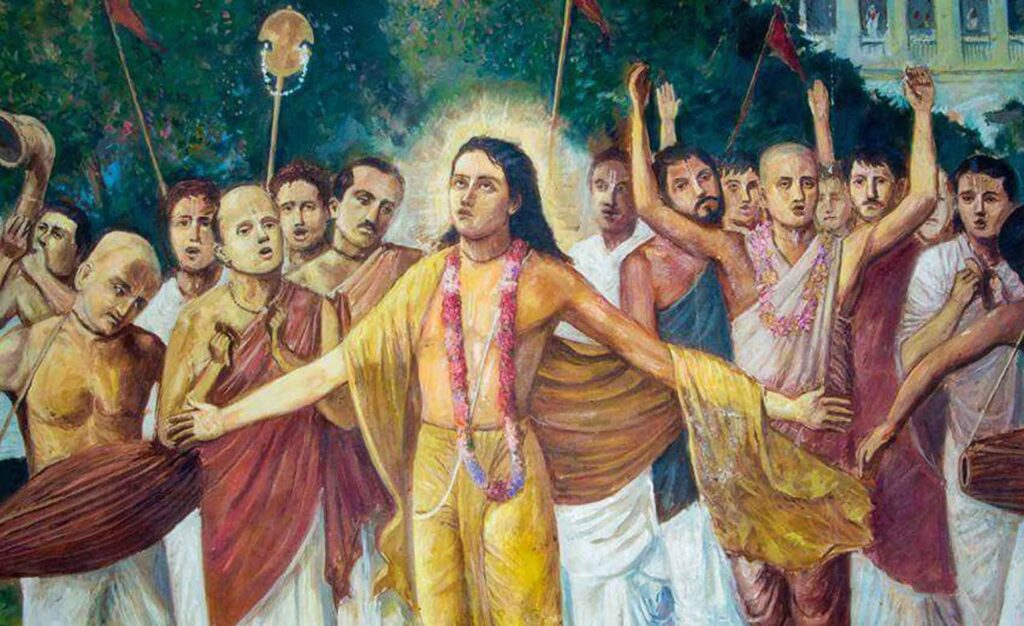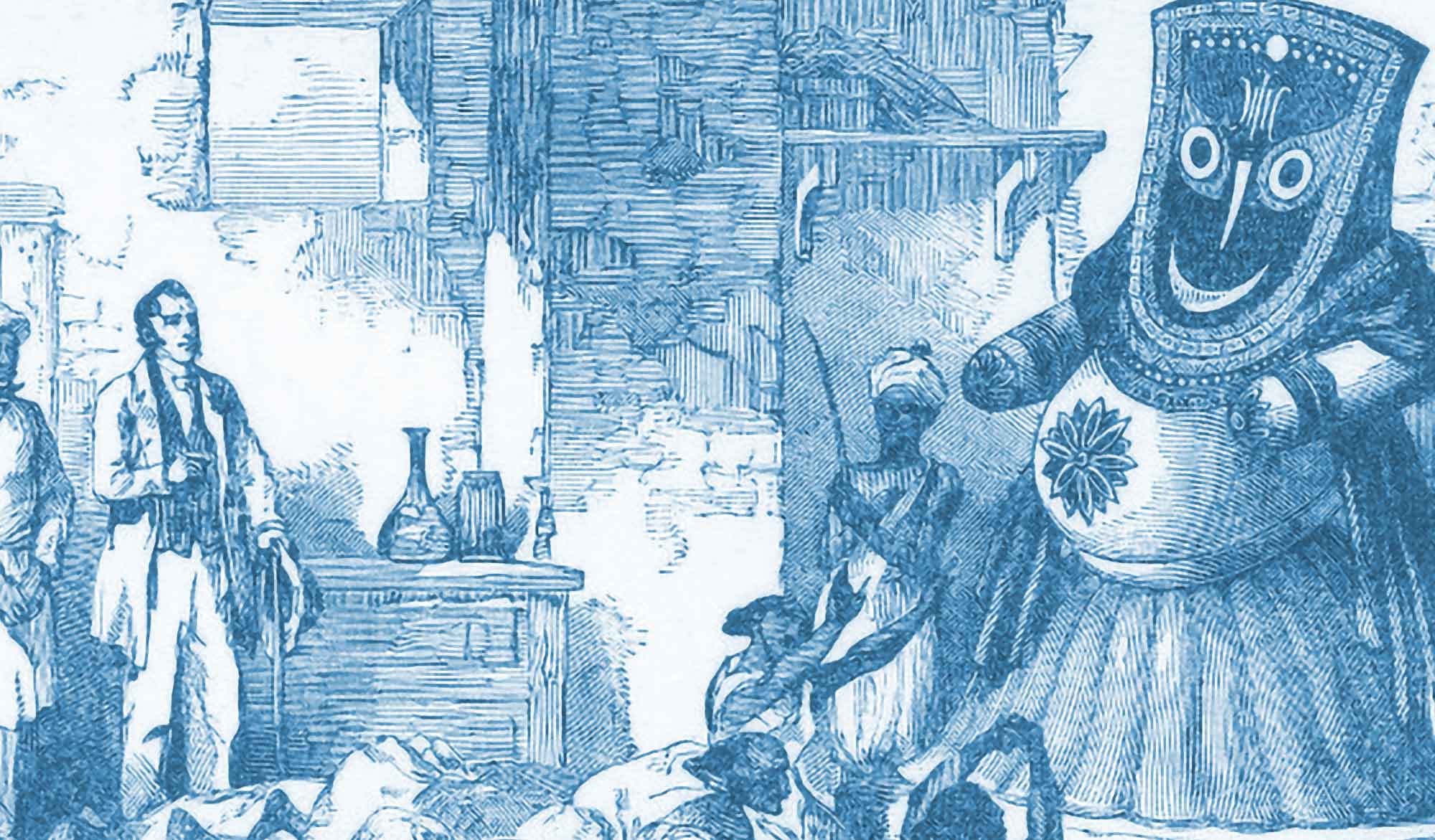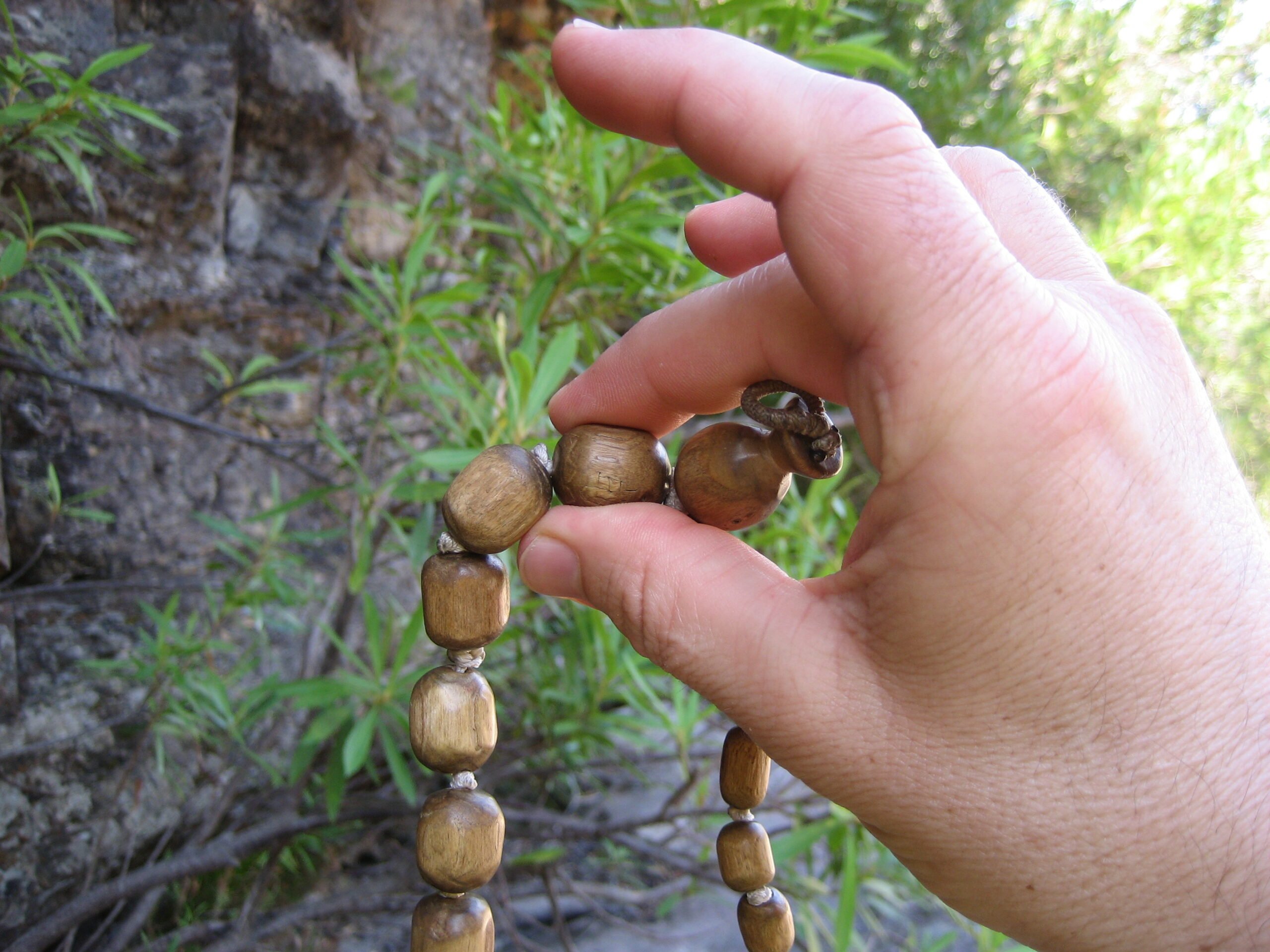Overview
Itāuyā Yamunā-tīra (Etawah on the Banks of the Yamunā) was first published in Sajjana Toṣaṇī Vol.4. issue 3 in 1892. In this article Bhaktivinoda Ṭhākura describes a visit to the city of Etawah in modern day Uttar Pradesh.
(translated by Swami B.V. Giri)
The city of Etawah has long been famous as a prosperous place. The city itself is not huge or beautiful. The water in this place is not as good as it used to be. Some houses are available for rent near the railway station. Food and dairy are easily available. There is a well near the station where water is especially appreciated. In Etawah, ten Bengalis work there as doctors. As a result, Etawah can be considered a good city among other cities in the Western Province.
Not only is Etawah famous for all of this. This city is situated on the banks of Śrī Yamunā. There are many places where the beauty of Śrī Yamunā Devī are to be found. A very spacious stone barrier ghāṭa adorns Śrī Yamunā Devī. The very small stone houses on the ghāṭa are beautiful and are like bhajana-kuṭīras. Turtles are floating in the water. A beautiful temple can be seen on a ghāṭa. There are Deities of Śrī Gaurī-Śaṅkara and Śrī Baladevajī. Śrīramtā Chaubey, a resident of Mathurā, serves Baladevajī. The colour of Baladeva is black. We do not understand this anomaly concerning Baladeva’s colour. We have seen many such places in Vraja-maṇḍala with this exception. If you search for the reason, no one can give a proper answer.
High landscapes are visible on both sides of the Yamunā. It is a great pleasure to see all these hills while sitting on the banks of the Yamunā in broad daylight. The ghāṭa was formerly a fortress, because it was on a high ground away from everyone. The ruins of that fort are still visible. We went up to the fort and saw a beautiful palace there. A little farther there is a tunnel and I came out that way. Some old people say that in ancient times a king named Sumeru Sena was the ruler of this fort.
Bateshwar is 6 krośas (10.8 miles) from this place. There is a story that Vasudeva Mahāśaya’s ancestor Śūrasena Mahārāja lived in Bateshwar. King Sumeru is also of that descent. If these stories are true, then it can be assumed that the Etawah fort belonged to the ancestors of Śrī Kṛṣṇa and that is why Śrī Yamunā is so beautiful here.
On the high ground, there is a temple of Śiva called Ṭiksi established by Vaśiṣṭha-deva. It can be assumed that the word Ṭiksi is a corruption of the word Tripureśa. The temple is beautifully built and the place is very lovely. Readers will know at some point what pleasure we had in visiting all these places.
When it comes to determining the origin of the word Etawah, it is rumored that the name is derived from iṣṭaka (brick) due to the brick fortress. In our opinion, it is more likely that Etawah stems from īṣṭa-sthāna (desirable place). There are bricks in all cities – so if Etawah is derived from the word ‘brick’, then all cities would be called Etawah. Judging by the beauty of the place and Śrī Yamunā, it is more likely to be called īṣṭa-sthāna.













